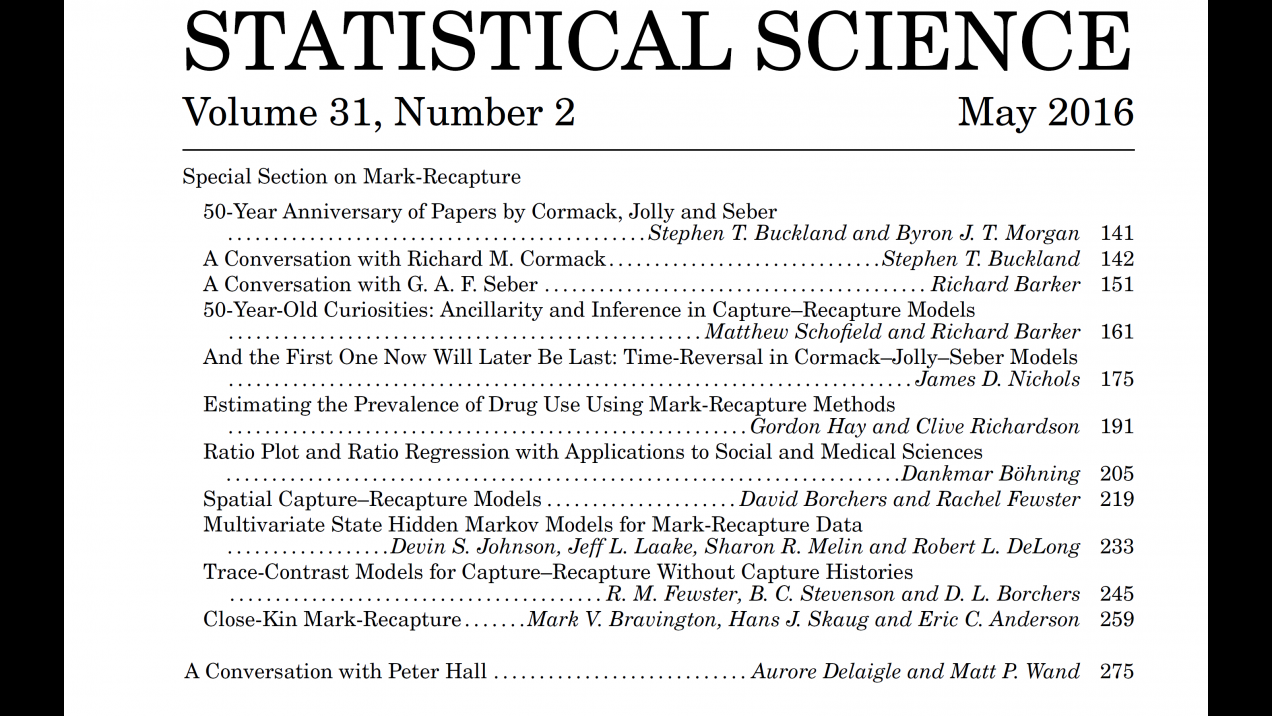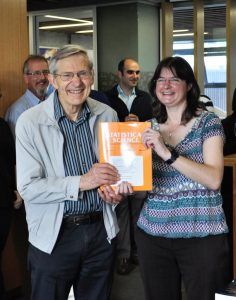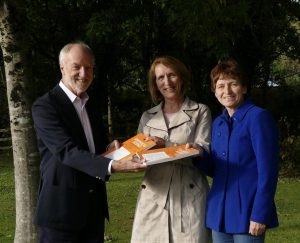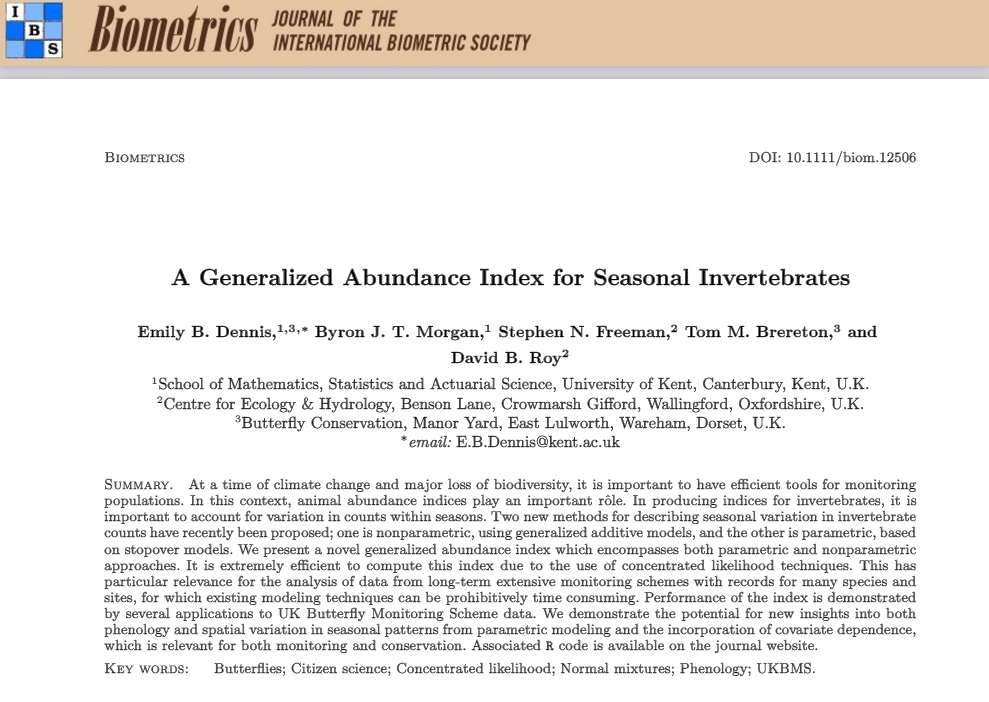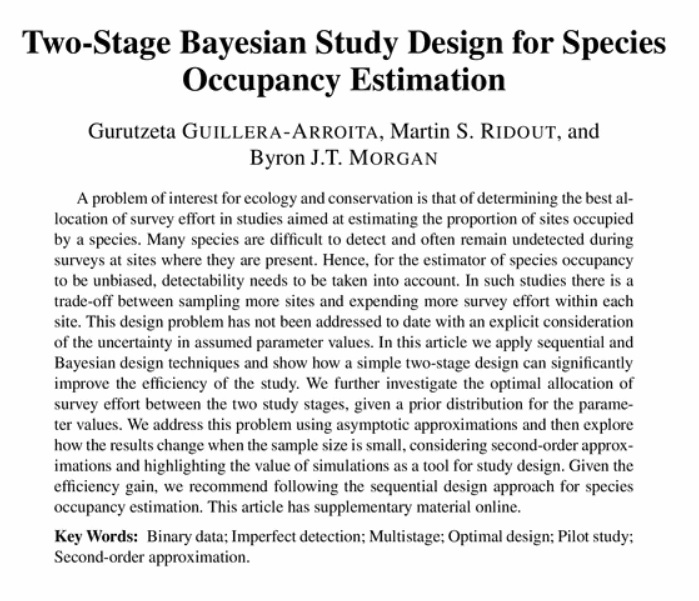The paper Hidden Markov Models for Extended Batch Data by Laura L. E. Cowen, Panagiotis Besbeas, Byron J. T. Morgan and Carl J. Schwarz has been published online early in Biometrics
Summary. Batch marking provides an important and efficient way to estimate the survival probabilities and population sizes of wild animals. It is particularly useful when dealing with animals that are difficult to mark individually. For the first time, we provide the likelihood for extended batch-marking experiments. It is often the case that samples contain individuals that remain unmarked, due to time and other constraints, and this information has not previously been analysed. We provide ways of modelling such information, including an open N-mixture approach. We demonstrate that models for both marked and unmarked individuals are hidden Markov models; this provides a unified approach, and is the key to developing methods for fast likelihood computation and maximisation. Likelihoods for marked and unmarked individuals can easily be combined using integrated population modelling. This allows the simultaneous estimation of population size and immigration, in addition to survival, as well as efficient estimation of standard errors and methods of model selection and evaluation, using standard likelihood techniques. Alternative methods for estimating population size are presented and compared. An illustration is provided by a weather-loach data set, previously analysed by means of a complex procedure of constructing a pseudo likelihood, the formation of estimating equations, the use of sandwich estimates of variance, and piecemeal estimation of population size. Simulation provides general validation of the hidden Markov model methods developed and demonstratestheir excellent performance and efficiency. This is especially notable due to the large numbers of hidden states that may be typically required

